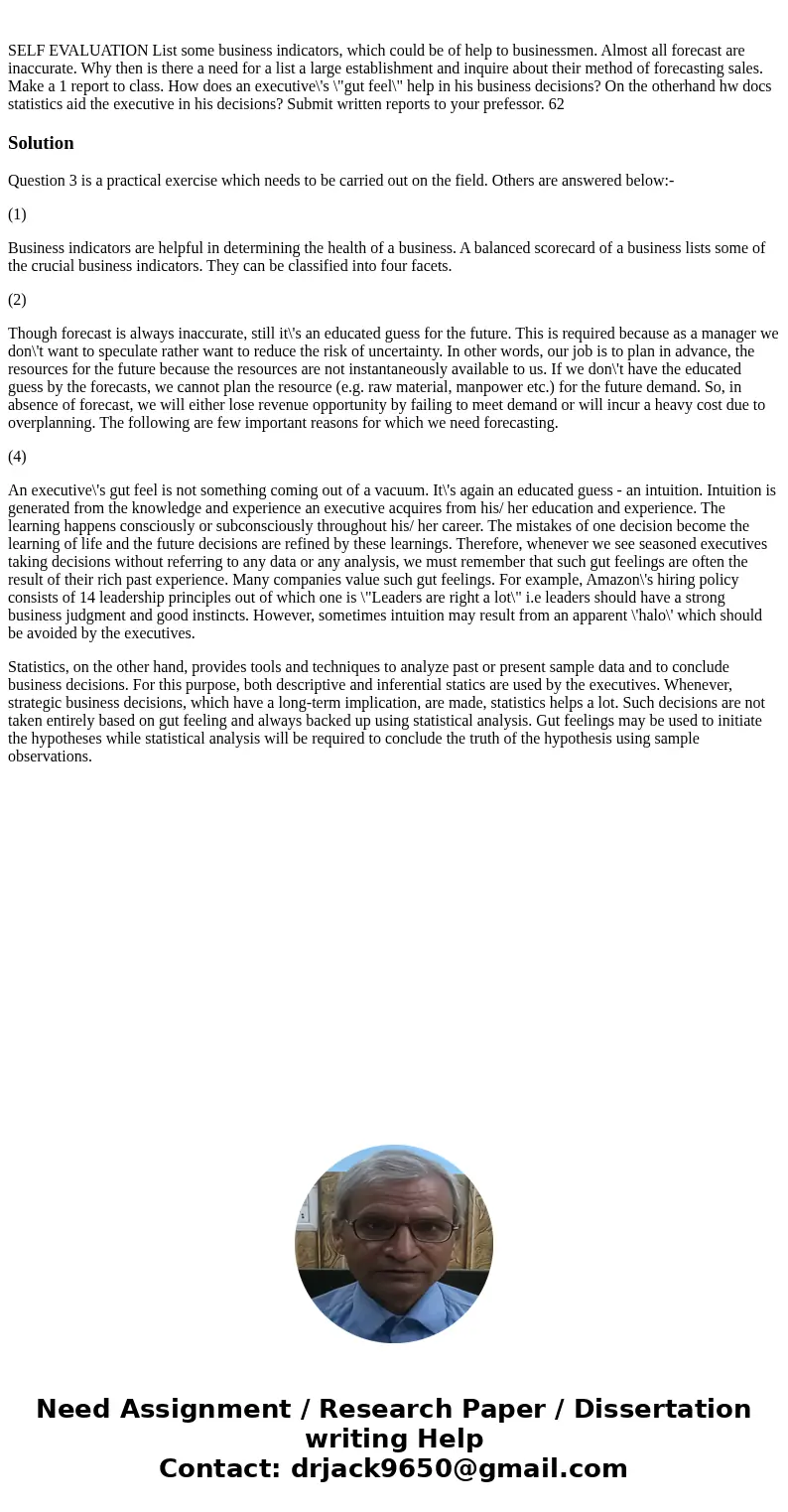SELF EVALUATION List some business indicators which could be
Solution
Question 3 is a practical exercise which needs to be carried out on the field. Others are answered below:-
(1)
Business indicators are helpful in determining the health of a business. A balanced scorecard of a business lists some of the crucial business indicators. They can be classified into four facets.
(2)
Though forecast is always inaccurate, still it\'s an educated guess for the future. This is required because as a manager we don\'t want to speculate rather want to reduce the risk of uncertainty. In other words, our job is to plan in advance, the resources for the future because the resources are not instantaneously available to us. If we don\'t have the educated guess by the forecasts, we cannot plan the resource (e.g. raw material, manpower etc.) for the future demand. So, in absence of forecast, we will either lose revenue opportunity by failing to meet demand or will incur a heavy cost due to overplanning. The following are few important reasons for which we need forecasting.
(4)
An executive\'s gut feel is not something coming out of a vacuum. It\'s again an educated guess - an intuition. Intuition is generated from the knowledge and experience an executive acquires from his/ her education and experience. The learning happens consciously or subconsciously throughout his/ her career. The mistakes of one decision become the learning of life and the future decisions are refined by these learnings. Therefore, whenever we see seasoned executives taking decisions without referring to any data or any analysis, we must remember that such gut feelings are often the result of their rich past experience. Many companies value such gut feelings. For example, Amazon\'s hiring policy consists of 14 leadership principles out of which one is \"Leaders are right a lot\" i.e leaders should have a strong business judgment and good instincts. However, sometimes intuition may result from an apparent \'halo\' which should be avoided by the executives.
Statistics, on the other hand, provides tools and techniques to analyze past or present sample data and to conclude business decisions. For this purpose, both descriptive and inferential statics are used by the executives. Whenever, strategic business decisions, which have a long-term implication, are made, statistics helps a lot. Such decisions are not taken entirely based on gut feeling and always backed up using statistical analysis. Gut feelings may be used to initiate the hypotheses while statistical analysis will be required to conclude the truth of the hypothesis using sample observations.

 Homework Sourse
Homework Sourse